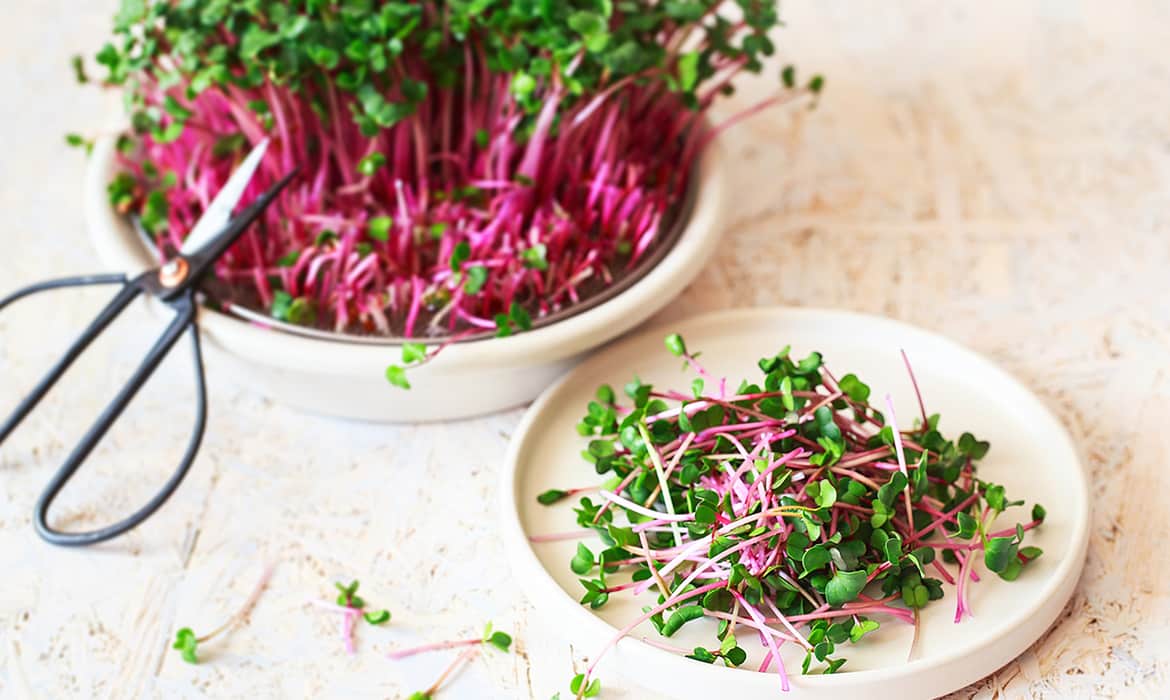
What Microgreens Should Every Beginner Grow?
The top 5 easy microgreens for beginners to grow are:
- Radish
- Arugula/Rocket
- Peas
- Red Cabbage
- Broccoli
If you’re just getting started with cultivating microgreens: these are the top 5 nutrient-dense microgreens you must grow as a beginner to awaken your inner green thumb and set you on your way to successfully growing any variety or type. So let’s get started!
Radish
Raphanus sativus L.
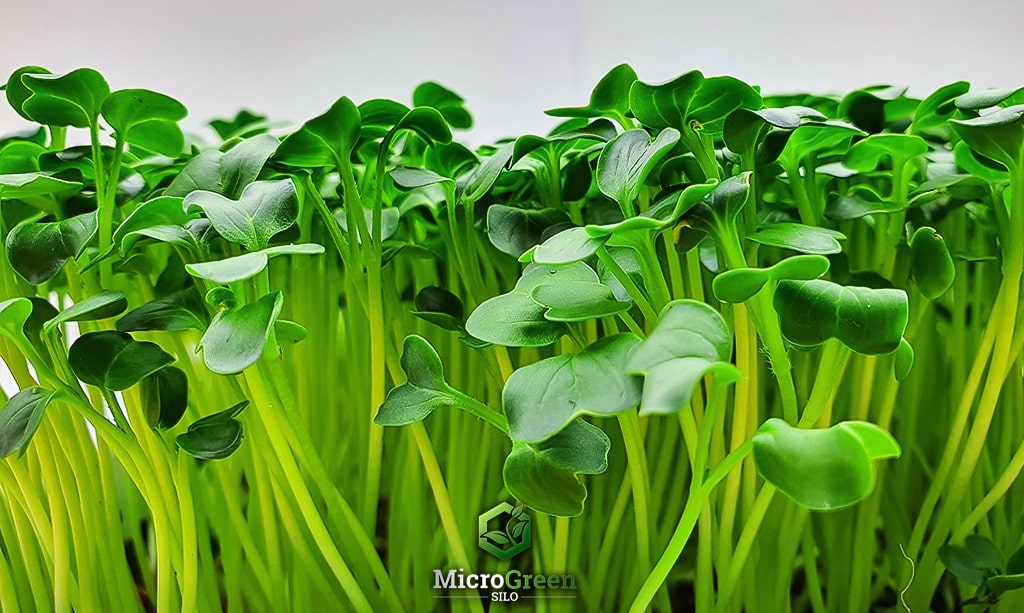
Daikon Radish: Raphanus sativus var. Longipinnatus.
The easiest microgreen to cultivate, which takes the number one spot in our top 5 easy microgreens for beginners to grow, is the beloved radish from the Brassicaceae family.
Radishes: Raphanus sativus L. microgreens have a robust, crisp texture and a punchy pungent flavor identical to mature radish. Extremely quick and simple to grow, ready to harvest in only four to twelve days!
There are over 20+ varieties of radish you can cultivate and enjoy right now. Whether you are a beginner or veteran green thumbs, the mighty radish should be on your priority list!
Radish earns the number one top rank because of their rapid growth, their tolerance if you forget to water them, and are by far the easiest and most forgiving microgreen to grow.
My all-time favorite variety of radish is the daikon; if you want to cultivate and grow your own, you can read the complete daikon radish grow guide here.
Arugula / Rocket
Eruca vesicaria spp. sativa
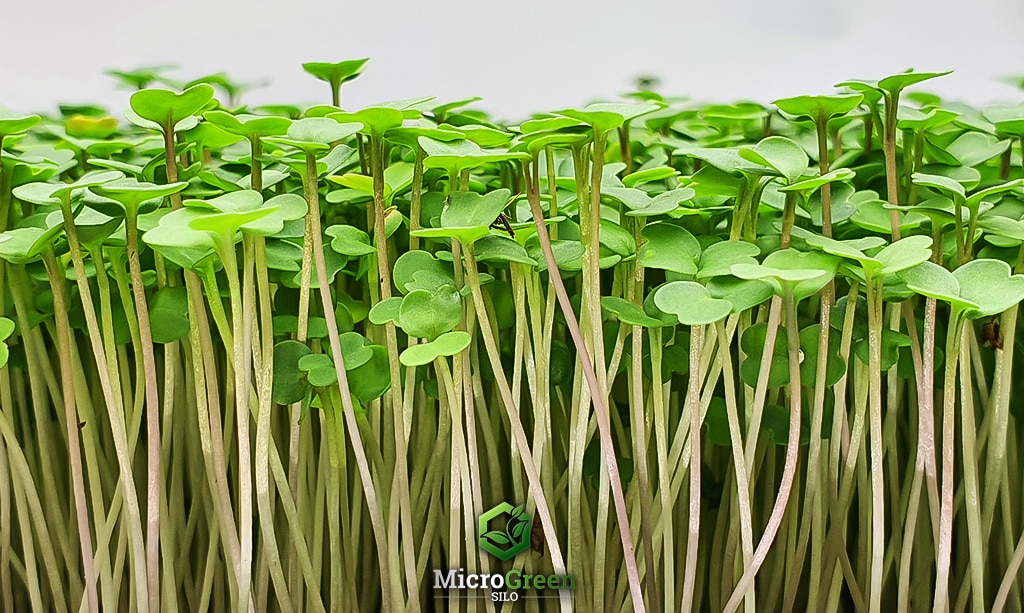
Arugula/Rocket: Eruca versicaria subsp. sativa
Arugula (American) or Rocket (British): Eruca vesicaria spp. sativa microgreens come in a close second place!
Arugula/rocket, also known as: rucola, roka, rugula, rocket salad, roquette, or garden rocket, has a bright, bold, and punchy peppery flavor which gets weaker the longer you let it grow.
Arugula is another fast-growing microgreen from the Brassicaceae family, ready for harvest in only five to eight days. Arugula microgreens are regarded mainstay of the hotter side of microgreens and are perfect in salads, sandwiches, or pesto.
Due to their quick growth, bold peppery flavor, and ease of cultivation, arugula microgreens rank second and are perfect for beginners to test their growing skills.
Read my arugula grow guide here if you’re ready to grow your own.
Peas
Pisum sativum
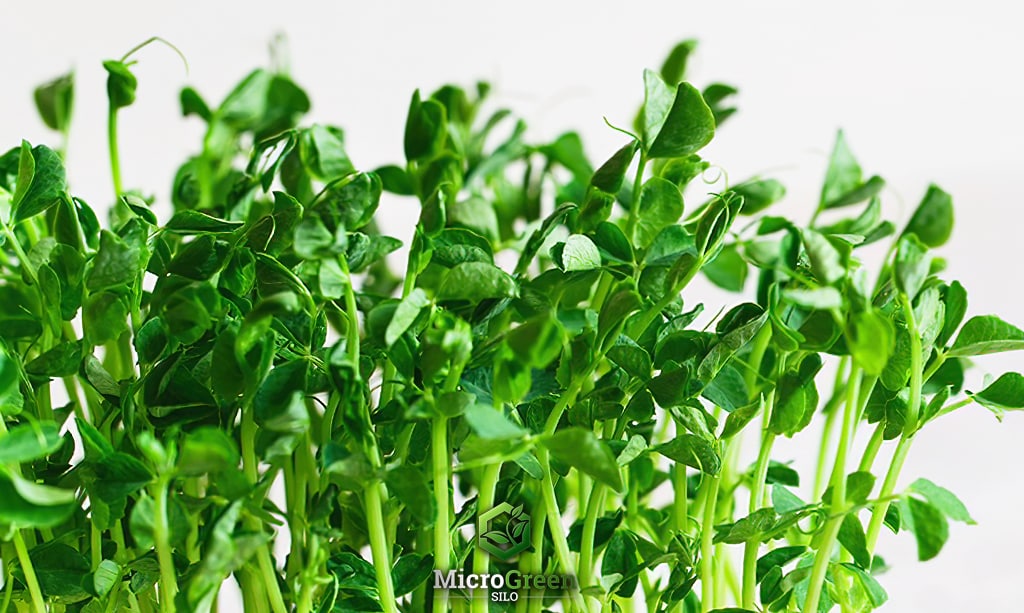
Green Peas: Pisum sativum
Peas: Pisum sativum microgreens, or pea shoots, take third place in our top 5 microgreens for beginners list.
Pea microgreens feature beautiful dark green leaves and bright green stems; different types have curly tendrils. They have the same sweetness and crunch as a fully developed, mature pea plant.
Peas belong to the Fabaceae or Leguminosae, commonly known as the legume, pea, or bean family. Pea microgreens are ready for harvest between eight to sixteen days. Your taste profile will determine whether you harvest them sooner or later.
Pea microgreens come in third because of their comparatively high germination rate, punchy fresh pea flavor, and fungus resistance. Lastly, lots of pea varieties to grow and enjoy.
One of the more popular varieties of pea is the green pea; if you want to cultivate and grow your own, you can read the pea green grow guide here.
Red Cabbage
Brassica oleracea var. capitata f. rubra
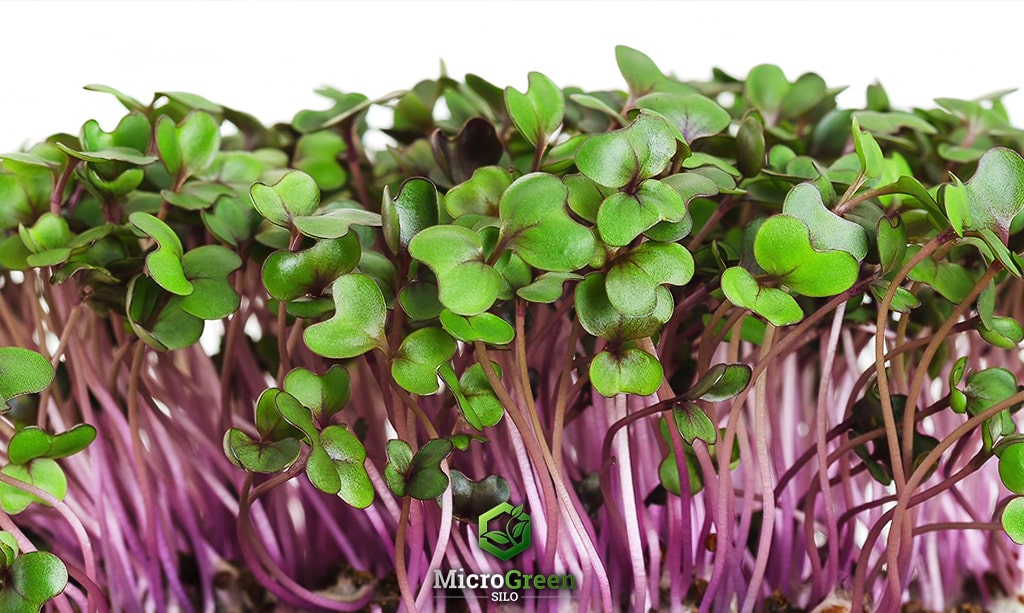
Red Cabbage: Brassica oleracea var. capitata f. rubra
Red cabbage: Brassica oleracea var. capitata f. rubra microgreens take the fourth spot!
Red cabbage feature brilliant magenta stems, and gorgeous emerald green cotyledons. Red cabbage microgreens have a sweet, somewhat mild piquant cabbage flavor reminiscent of broccoli.
Red cabbage microgreens also belong to the Brassicaceae family and can be ready for harvest between five and fifteen days, depending on your preferred flavor profile.
The fourth place goes to red cabbage because of its speedy growth, fantastic flavor, and gorgeous appearance.
No matter if you’re a seasoned grower or just getting started, I highly recommend giving red cabbage microgreens a try—you won’t be disappointed!
Broccoli
Brassica oleracea var. italica
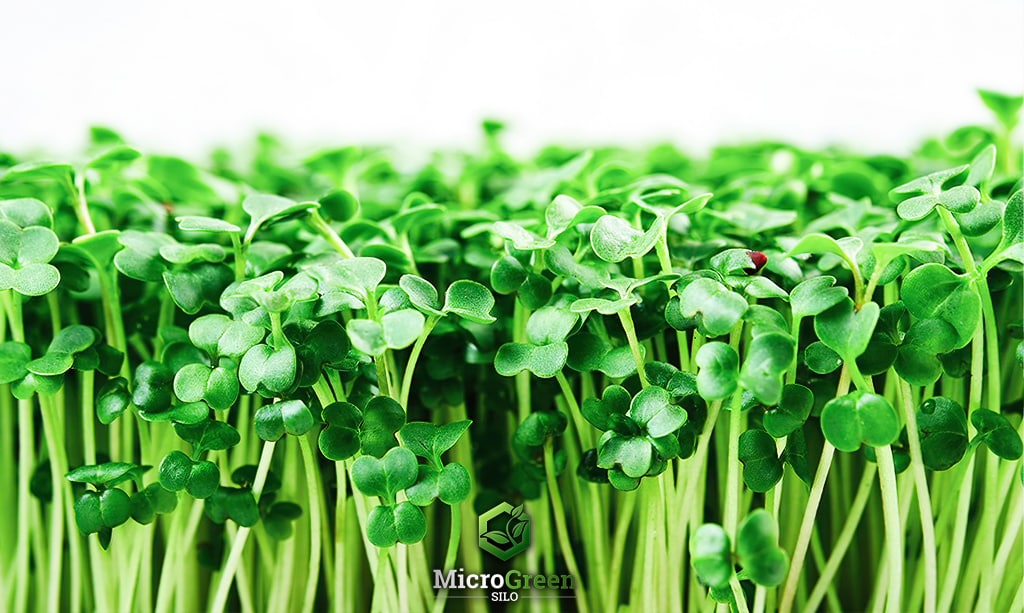
Broccoli: Brassica oleracea var. italica
Brocolli: Brassica oleracea var. italica. is the final competitor. Broccoli, let’s face it, is hated by everyone and deserves to be last. But just because most people dislike it doesn’t mean you will too.
Broccoli features creamy white stems with jade green cotyledons. It has a somewhat similar flavor to cabbage, crunchy, fresh, earthy, albeit mild.
Brocolli also shares the same family, Brassicaceae, as cabbage and arugula. Depending on your preferred flavor profile, broccoli microgreens can be harvested anywhere between five and ten days after planting.
Broccoli microgreens come in last because there must be a loser. But that doesn’t mean you shouldn’t grow them; in fact, I encourage you to give them a try; you may fall in love with the flavor! Just don’t hate me if it’s not love at first taste…
If you love broccoli you can find the broccoli grow guide here.
Conclusion!
If you’re planning on cultivating your every own microgreens, the best beginner types are Radish, Arugula/Rocket, Peas, Red Cabbage and Broccoli. If you get stuck or have difficulties growing any of the above microgreens, feel free to write in the comments. And remember, Keep Your Hands In The Dirt!



Comments (2)
Hi Milos, You always provide in-depth analysis and understanding.
Thank you for your appreciation! We’re committed to delivering valuable insights and fostering a deeper understanding of the microgreen world. If you ever have more questions or topics you’d like us to cover, feel free to let us know. Here’s to growing knowledge together!